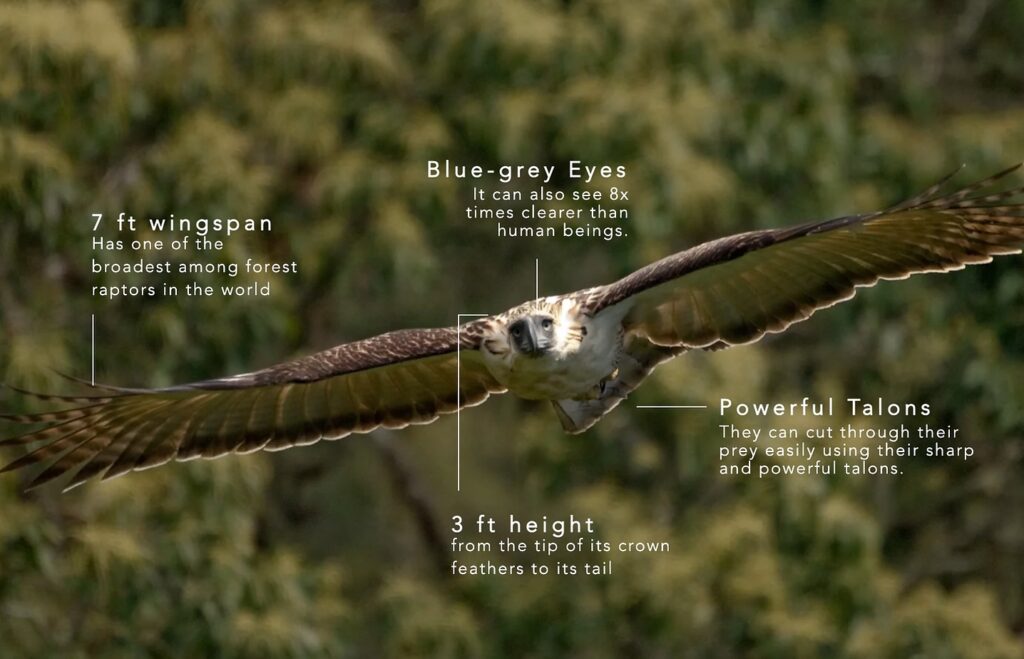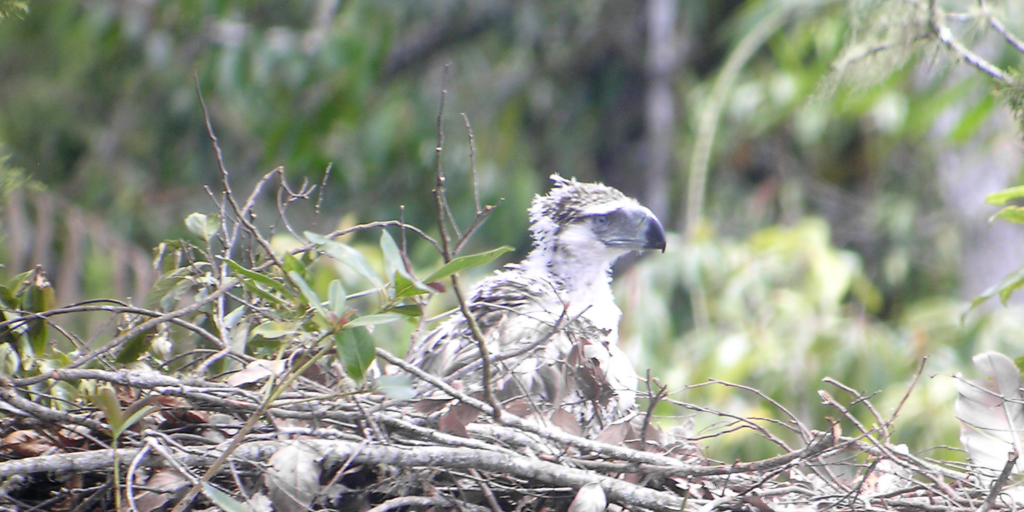Philippine Eagle Week: Interesting facts about the rarest bird of prey
CEBU CITY, Philippines – Every June 4 to June 10, the Philippines celebrates the Philippine Eagle Week.
The week-long observation, first enacted in 1999, is meant to raise awareness in protecting one of the world’s critically endangered raptors.
In celebration of Philippine Eagle Week, CDN Digital has compiled some interesting facts about the National Bird.
1. Rarest, most powerful and one of the largest raptors in the world
For bird watchers and wildlife enthusiasts, spotting a Philippine Eagle, also known as the monkey-eating eagle, in the wild is considered a once-in-a-lifetime moment.
With wings stretching up to seven feet, and a height of up to three feet, it is one of the largest eagles in the world in terms of length and wingspan.

Anatomy of a Philippine Eagle | Photo from Philippine Eagle Foundation
It got its nickname the ‘monkey-eating eagle’ mainly because it was initially believed to hunt on monkeys only. But further studies found out that this vicious apex predator, with the help of its sharp talons, feeds on any available preys in its surroundings.
READ MORE: Courtship of Philippine eagle pair captured on film
2. The only ‘blue-gray eyed’ eagle
Unlike other eagles in the world that have yellow eyes, the Philippine Eagle has blue-grey eyes, making it the only ‘blue-gray eyed’ eagle. This is also one of the traits that makes the ‘Haring Ibon’ a beloved and rare sight to behold.
3. Monogamous and lays only 1 egg every two years
Aside from continued deforestation or destruction of its natural habitats and poaching, the monkey-eating agles’ ability to reproduce is cited as a challenge in conserving and increasing its population in the world.

A Philippine Eaglet on its nesting site | Wikimedia Commons File
Firstly, this eagle is a monogamous animal which means that they do not seek other partners in their lifetime. Secondly, a couple can only produce one egg in every two years.
4. Found in 4 islands in the Philippines
The Philippine Eagle is endemic in the Philippines, and it is found only in four major islands – Luzon, Samar, Leyte and Mindanao.
Based on a 2003 study published on the International Journal of Avian Science, also known as Ibis, they are ‘usually located in steep terrain and heavy forest where visibility and accessibility are limited.’
READ MORE:
Planting for the future of the PH eagle
5. Killing a Philippine Eagle means jail time, hefty fines
Like all critically endangered species, the Philippine eagle is protected under Republic Act No. 9147 or the Wildlife Resources Conservation and Protection Act.

A captive Philippine Eagle | Stock Photo
And anyone caught or found guilty of killing wildlife creatures can face jail time from six to 12 years, with hefty fines ranging from P100,000 to P1 million.
In 2008, a farmer in Bukidnon was detained when he confessed to shooting and eating a Philippine Eagle within the Kitanglad Mountain Range recently released from the Philippine Eagle Foundation Center in Davao City.
Conservationists estimated that there are only 400 pairs of Philippine Eagles left in the wild. Should there be no actions and interventions done to protect these majestic raptors, experts projected that the species may go extinct by 2050.
Sources
- The Philippine Eagle | PEF (philippineeaglefoundation.org)
- Sanctuary offers hope for endangered Philippine eagle (phys.org)
- Philippine Eagle Week: Unabated forest destruction killing national bird | Inquirer News
- Proclamation No. 79, s. 1999 | Official Gazette of the Republic of the Philippines
- UNDP Philippines
Disclaimer: The comments uploaded on this site do not necessarily represent or reflect the views of management and owner of Cebudailynews. We reserve the right to exclude comments that we deem to be inconsistent with our editorial standards.

